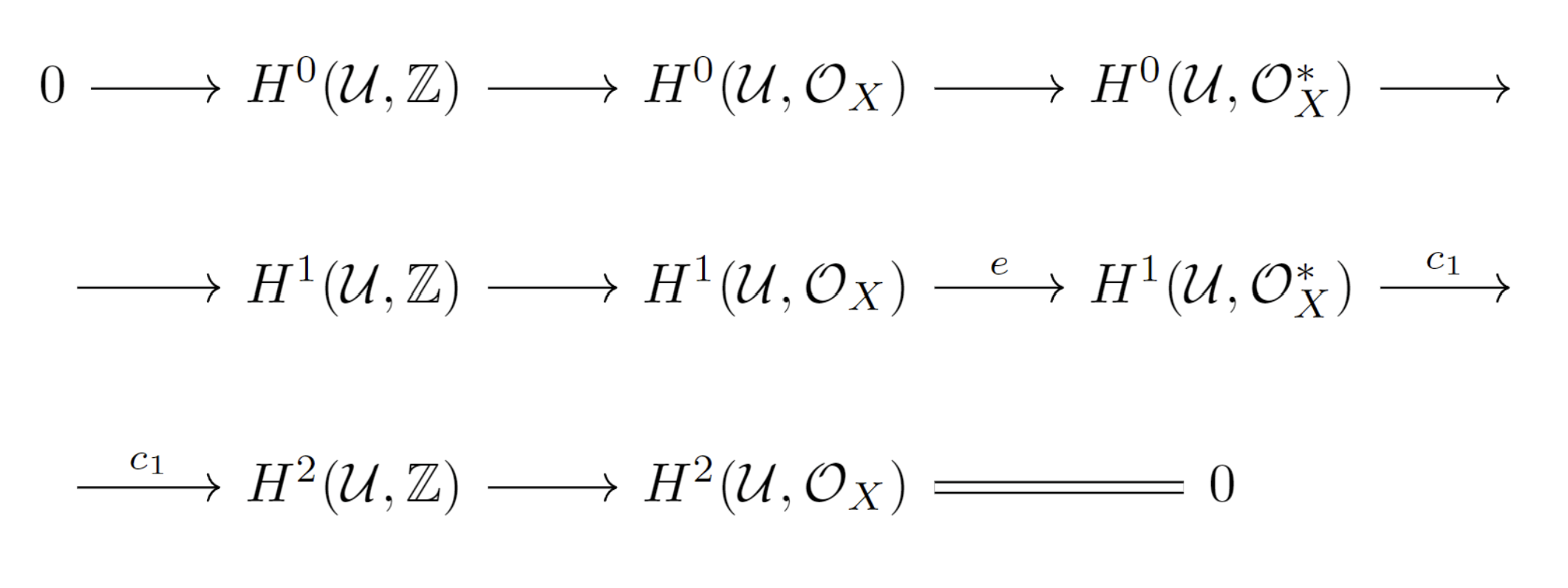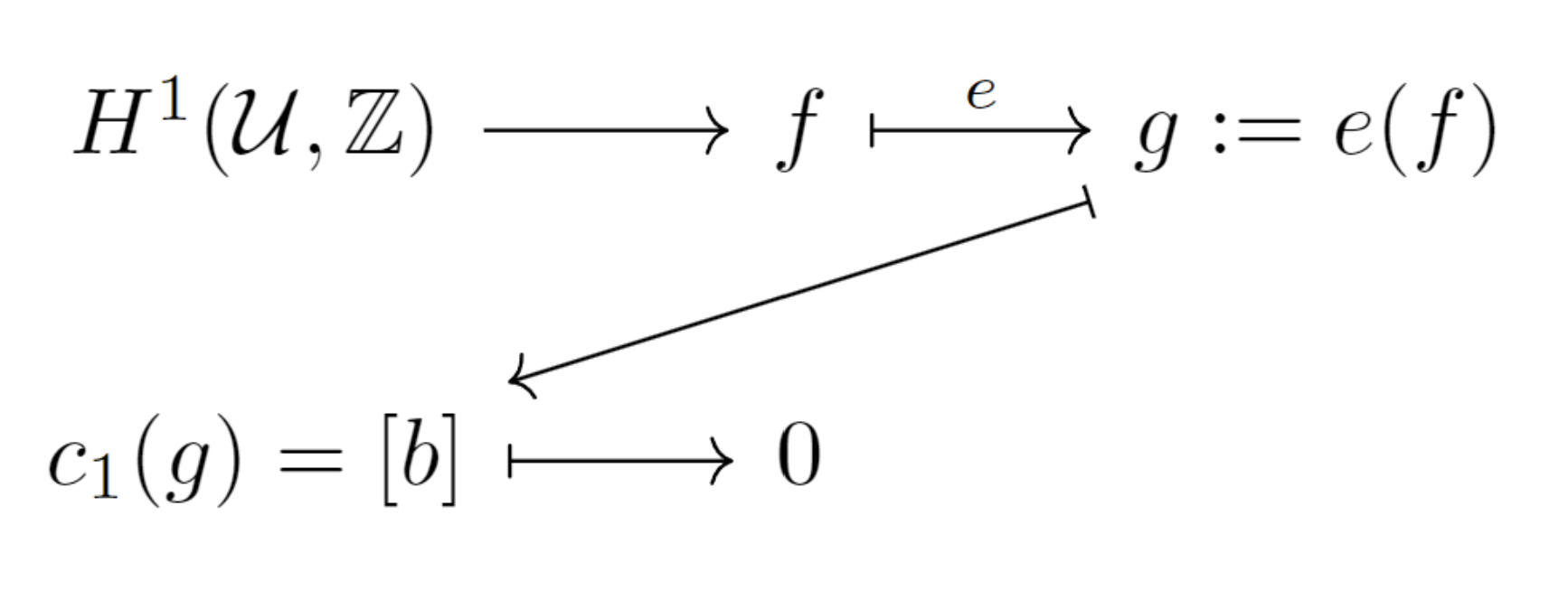For a divisor D∈Div(X), define a sheaf OD on X
OD(U):={f∈MX(U):(f)≥−D}.
Prop. OD is a locally free sheaf of OX-module of rank 1.
Recall the exponential sequence
0→Z→OX→OX∗→0.
Given an open cover U={Ui}i∈I, such that Ui,Uij are simply connected. There is a long exact sequence of groups induced by the short exact sequence:

Here we shall define the Chern class (named after 陈省身)
c1:H1(U,OX∗)→H2(U,Z)
and prove that c1 fits into the long exact sequence.
Definition of Chern class
Given g∈Z1(U,OX∗). Since Uij is simply connected, then ∃hij∈OX(Uij), s.t.
gij=exp(2πihij).
Hence (hij) defines an element in C1(U,OX). Notice that g satisfies cocycle condition. Then
gijgjkgik−1=exp(2πi(hij+hjk−hik))=1
Namely hij+hji−hik∈Z, which implies that(δh)ijk=hij+hji−hik, and δh∈Z1(U,Z). Therefore, we can define
c1([g]):=[δh]∈H2(U,Z).
In this process, the definition relies on the choice of h. If another h′ is given, then
h′−h=(2πiaij)∈C1(U,Z).
Hence [δh−δh′]=[δa]∈B1(U,Z).
Exactness at H1(U,OX∗)
Case I: Let [g]=e([f])∈im(e), where f=(fij)∈Z1(U,OX). Then by cocycle condition, ∃h∈C0(U,OX∗), s.t.
gik=hiexp(2πifik)hk−1.
Since Ui is simply-connected, then ∃k∈C0(U,OX), s.t.
exp(2πiki)=hi,∀i∈I
⇒gjl=exp(2πi(kj+fjl−kl)),∀j,k∈I
By definition of Chern class above, c1([g])=[δ(kj+fjl−kl)]=[δf], and e([f])=[g]. Therefore,
c1∘e(f)=δf=:b∈B2(U,Z).
This implies that c1([g])=0∈H2(U,Z).

Case II: Let [g]∈ker(c1), namely c1([g])=[b]=0∈H2(U,Z). By the construction of Chern class, there exists h∈C1(U,OX), s.t.
gij=exp(2πihij),b=δh
The condition [b]=0 means that [b]=[δh]∈H2(U,Z) is a coboundary. Namely, ∃a∈C1(U,Z)⊂C1(U,OX), s.t.
δg=δa=b.
Set fij=hij−aij∈C1(U,OX). Then
δf=δh−δa=b−b=0,
which implies that f∈Z1(U,OX). In addition, since aik∈Z, then
exp(2πifik)=exp(2πihik)=gik∈OX(Uik).
Therefore, [g]=e[f]. This completes the proof of exactness at H1(U,OX∗).
Exactness at H2(U,Z)
Assume that we do not know H2(U,OX)=0.
(1) imc1⊂keri: suppose that [g]∈H1(X,OX∗). ∃b∈Z2(U,Z), s.t.
b=c1(g)=δh
for some h∈C1(U,OX). Hence b∈B2(U,OX). In other words,
i(c1([g]))=[δh]=0∈H2(U,OX).
(2) keri⊂imc1: let [b]∈H2(U,Z) such that i[b]=0∈H2(U,OX). Then b∈B2(U,OX), which means that ∃h∈C1(U,OX), such that
b=δh.
Define gij′=exp(2πihij). Then g′∈C1(U,OX∗), and
(δg′)ijk=exp(2πi(hij+hjk−hik))=exp(2πiaijk)=1.
Thus δg′=0∈C2(U,OX∗), and g′∈Z1(U,OX∗). In this case, by definition of Chern class, c1(g′)=[δh]=[b], which means that b has a preimage under c1.
Divisors corresponds to line bundles
Cor. Let X be a Riemann surface. Then there is a natural isomorphism of groups
Pic(X)≅H1(X,OX∗).
Prop. Let X be a Riemann surface, D∈Div(X) be a divisor on X. Then there exists a holomorphic line bundle L with a meromorphic section s:X→L, s.t.
(s)=D.
Denote the line bundle and meromorphic section of D by LD and sD.

